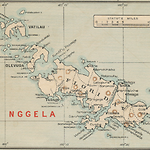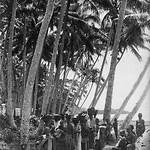Place: Nggela Islands
- Alternative Names
- Florida Islands
Details
The Nggela Islands used to also be known as the Florida Islands, and today this name is sometimes still used for Nggela Sule, the main island. The group consists of fifty islands in all. The second largest is Nggela Pile, followed by the much smaller Olevugha and Vatilau. Best known is the very small Tulagi (q.v.) which was the Protectorate's capital from 1897 to 1942. Around Tulagi Harbour, Gavutu, Tanambogo and Makambo Islands were the commercial bases for large merchant companies and they became as famous as Tulagi itself. Utuha, or Mboli Passage, between Nggela Sule and Nggela Pile is used as a sheltered shortcut through the Group and as an easy passage to Malaita from Tulagi and now from Honiara.
Nggela Islanders had long-standing trade relationships with other Solomon Islanders, and they raided and had kinship connections with surrounding islands. They provided shells to Langlanga people on Malaita to use for shell wealth manufacture, and also trading pigs to there. Nggela Islands are central to Savo, Guadalcanal, Malaita, Isabel and the Russell Islands.
The first contact with Europeans came in the late eighteenth and early nineteenth centuries. The Melanesian Mission (q.v.) began visiting the Nggela area early on, taking students away to be trained in New Zealand and at Norfolk Island after 1867. Charles Sapibuana (q.v.) from Nggela was one of the last to be taken to Kohimarama in Auckland, New Zealand in 1866. The Anglican Reverend C. H. Brooke and Joe Atkin were based at Mboli for part of each year from 1869 but over the next few years some were hostile because of the Sandfly (q.v.) and Lavinia (q.v.) massacres and their aftermath. By 1873, the first Nggela Prayer Book was published and permanent village schools were established at Polomuhu (Mboli), with Dudly Laukoma as teacher, and at Langgo (Gaeta) in 1877, with Charles Sapibuana as teacher. Rev. Alfred Penny conducted the first baptisms on Nggela in 1879. (Penny 1888) Anglican missionaries made fast progress after the 1880 Sandfly Passage incident, in which Bishop John Selwyn helped negotiate an end to naval retaliation against the people. By 1884, there were six hundred baptisms, and by the early 1890s 2,800 had been added to the church on Nggela. The Anglicans established St. Luke's, a boy's school at Siota (q.v.) in 1896 with forty students.
By the time the British Resident Commissioner was established at Tulagi in 1897, the Melanesian Mission claimed to minister to four thousand Christians in the Nggela Islands, almost the entire population. This made the Nggela Islands, along with Isabel, the most fully Christian area of all the Solomon Islands. There were thirty-three schools and almost one hundred teachers. They were led by two deacons-Reuben Bula and Alfred Lobu-supervised by Rev. C. W. Browning. Honggo, Siota and Bunana became the main mission bases. Another school was established on Bungana Island (q.v.) in 1911. In 1920 the diocesan headquarters and a Theological College were transferred to Siota. St. Luke's Cathedral (q.v.) was built at Siota in 1928, remaining until it was destroyed in the Second World War (q.v.). In 1887, the Anglicans also introduced a Vaukolu or 'meeting' (q.v.), which functioned as an assembly for Anglican leaders throughout the central Solomons. In essence this was the first proto-parliament in the Solomons. It continued to operate into the early twentieth century, though by then its function had become more social than administrative.
The Nggela Islands were unique in that they became the centre of the Protectorate administration and also, after 1920, the headquarters of the Diocese of Melanesia (the Melanesian Mission). This European presence and the participation of large numbers of Nggela men and a few women in the external labour trade meant that the islands soon became a peaceful part of the Protectorate. The Melanesian Mission worked alongside traders, the labour trade and the Protectorate government. Traders began operating in the Central Solomons in the 1860s, 1870s and 1880s. Joseph Emmanuel ('Portuguese Joe') traded there and at Savo during the final decades of the nineteenth century, as did Lars Neilsen and Oscar Svensen (q.v.). The best known Nggela trader was a Norwegian, Lars Neilson, who began trading on nearby Savo in 1877-1878, and then in about 1888 purchased Gavutu Island in the Nggela Islands. Neilson also purchased Mbara Island (Golden 1993, 68; Bennett 1987, 25, 82) and helped Resident Commissioner Woodford (q.v.) to buy Tulagi Island. Nggela people also began trading with Europeans in traditional wealth items such as dog and porpoise teeth, which were then used elsewhere to purchase indigenous trade items. Once Tulagi and the attached commercial bases began to operate at the end of the nineteenth century, the surrounding Nggela Islands were the primary provider of foodstuffs for the European and Chinese community there. The foreign presence was a 'windfall' for the Nggela people because it gave them access to large quantities of European goods, easily traded for local produce. Just as the Melanesian Mission's Siota base familiarised them with foreign ways, so too did access to Tulagi, Gavutu, Tanambogo and Makambo. During the 1930s, when copra prices were low, Nggela's villagers also collected trochus shell and sold it to local traders and trading ships. (Bennett 1987, 246)
The Nggela Islands also supplied labour for indenture in overseas colonies, particularly Queensland and Fiji. Given that the population of the Group was likely between four and five thousand people, the 2,069 labourers who left for Queensland between the 1870s and 1900s was an exceptionally large segment of the overall population. The majority left during the 1880s and 1890s. Only eighty-six went to Fiji, mainly in the late 1870s and 1880s. (Price with Baker 1976; Siegel 1985) The labour recruiters also found Nggela largely peaceful and collected food, water and wood there to refresh their supplies. Nggela continued to serve as labourers as plantations developed within the Protectorate: 659 worked on other islands between 1913 and 1940. (Shlomowitz and Bedford 1988) Nggela people also worked on Solomon Islands plantations during the twentieth century.
Government District Officers were appointed to serve on Savo and in the Nggela Islands from 1923, as an extension of government from the Tulagi headquarters. The Nggela Islands were part of the Protectorate's Central District. The 1930s economic depression was relatively mild in the Nggela area until late in the decade, but the downturn came at a time when the people were seeking educational and health advances. In 1931 the combined Savo and Nggela Islands population was 4,649. Savo's population would have been less than 1,000, with around 3,600 in the Nggela Islands. Because of the proximity of Tulagi, the Nggela Islands became one of the most regulated groups in the Solomons. Nggela had early Native Courts, Government Headmen were appointed in the 1920s and 1930s, and by the 1940s Local Councils were seen as the best way to include Solomon Islanders in government processes. The strong presence of the Melanesian Mission also meant that modern education was available and the Islanders had advice on how to fit into the Protectorate system. Chiefs Selwyn Aloa and Patrick Kike petitioned the High Commissioner and said they were willing to pay for up to four years of education for two boys, who would then become their new leaders. The plan foundered due to a lack of official support, but it gives some idea of the level of initiative coming from the Nggela people. (Bennett 1987, 259-259)
When the Second World War (q.v.) arrived in the Solomons Nggela became a major target for attack by the Japanese. Tulagi, Gavutu, Tanambogo and Makambo, Siota and Bungana were all evacuated. Japanese bombing began in March and April of 1942, with a final British withdrawal in early May. (Nggela people benefitted from looting and burnt the law books in the Judicial Commissioner's house.) The Japanese then quickly built an airfield at Lungga on neighbouring Guadalcanal and a seaplane base at Tulagi. On 7 August the Americans launched a counter-attack on Guadalcanal and also regained control of Tulagi, which became a base for PT boats and seaplanes and a safe harbour for Allied ships. Later in the war 6,500 U.S. troops were stationed in the Nggela Group, outnumbering the indigenous population. Once more, the local people found themselves in close contact with foreigners and benefitted from trade, although the wartime experience was clearly traumatic as well. Some Nggela men joined the scouts who worked with coastwatchers (q.v.) and others joined the Defence Force or Labour Corps.
Protectorate administration was restored in a limited form when a District Officer and a few police were based at Tulagi beginning in 1942. Local Government Councils (q.v.) were introduced early in the 1940s, and by 1946 Nggela had three. Straight after the war the administration of the Central District was shifted to Honiara, with Nggela still included in it. As Honiara grew, it became a focus for employment and Nggela produce began to make its way to the market there. Before the war Nggela had been involved in the Chair and Rule Movement (q.v.) and after the war Nggela people were heavily involved in Maasina Rule (q.v.) (Bennett 1987, 295, 298) The 1970 Census recorded 5,351 residents of the Nggela Island.
Once Honiara on Guadalcanal became the new capital after 1945, the importance of the Nggela area declined and it became a backwater-Tulagi was destroyed during the war and never recovered. It was bolstered somewhat when a tuna cannery was established there in the early 1970s, operating until Noro in the Western Solomons replaced it as the country's fishing and canning centre. The Anglican Church also shifted its base to Honiara and other areas on Guadalcanal. (Bennett 1987, 55, 82, 84, 242-243, 290, 295, 400; Golden 1993, 72)
Related entries
Published resources
Books
- Bennett, Judith A., Wealth of the Solomons: A History of a Pacific Archipelago, 1800-1978, University of Hawai'i Press, Honolulu, 1987. Details
- Golden, Graeme A., The Early European Settlers of the Solomon Islands, Graeme A. Golden, Melbourne, 1993. Details
- Penny, Alfred, Ten Years in Melanesia, Originally published: 1887, 2nd edn, Wells Gardner; Darton, London, 1888. Details
Journal Articles
- Shlomowitz, Ralph, and Bedford, Richard D., 'The Internal Labour Trade in New Hebrides and Solomon Islands, c 1900-1941', Journal de la Société des Océanistes, vol. 86, 1988, pp. 61-85. Details
- Siegel, Jeff, 'Origins of Pacific Island Labourers in Fiji', Journal of Pacific History, vol. 20, no. 2, 1985, pp. 42-54. Details
Images
.png)
- Title
- "A Kombe Belle"-3/4 fig. Young girl, Florida (Nggela) Islands (Solomon Islands)
- Type
- Image
- Date
- 1906
- Source
- Anglican Church of Melanesia
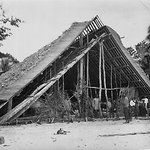
- Title
- A Canoe House at Kombe, Florida (Nggela) Islands (Solomon Islands)
- Type
- Image
- Date
- 1906
- Source
- Anglican Church of Melanesia
.png)
- Title
- A Church, Honggo, Florida (Nggela) islands (Solomon Islands)
- Type
- Image
- Date
- 1906
- Source
- Anglican Church of Melanesia
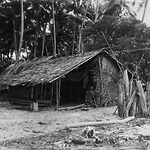
- Title
- A Lonagapolo House, Florida (Nggela) Islands (Solomon Islands)
- Type
- Image
- Date
- 1906
- Source
- Anglican Church of Melanesia
_(SINM).png)
- Title
- A Man of Florida, Florida (Nggela) Islands (Solomon Islands)
- Type
- Image
- Date
- 1906
- Source
- Anglican Church of Melanesia
.png)
- Title
- A Quiet Corner, Haiavo Bay, Florida (Nggela) Islands (Solomon Islands)
- Type
- Image
- Date
- 1906
- Source
- Anglican Church of Melanesia
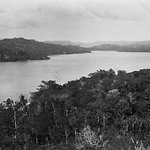
- Title
- Baranago Harbour, Honggo , from Bunana, Florida (Nggela) Islands (Solomon Islands)
- Type
- Image
- Date
- 1906
- Source
- Anglican Church of Melanesia
.png)
- Title
- Canoes, North Malaita Island (Solomon Islands)
- Type
- Image
- Date
- 1906
- Source
- Anglican Church of Melanesia
.png)
- Title
- Church and School, Honggo, Florida (Nggela) Islands (Solomon Islands)
- Type
- Image
- Date
- 1906
- Source
- Anglican Church of Melanesia
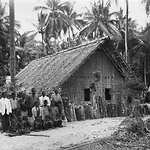
- Title
- Church at Kombe, Florida (Nggela) Islands (Solomon Islands)
- Type
- Image
- Date
- 1906
- Source
- Anglican Church of Melanesia

- Title
- Church at Longapolo, Florida (Nggela) Islands (Solomon Islands)
- Type
- Image
- Date
- 1906
- Source
- Anglican Church of Melanesia
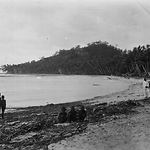
- Title
- Coast of Longapolo, Gaeta, Florida (Nggela) Islands (Solomon Islands)
- Type
- Image
- Date
- 1906
- Source
- Anglican Church of Melanesia
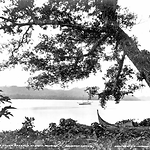
- Title
- Entrance Utuha, Passage at Siota, Florida (Nggela) Islands (Solomon Islands)
- Type
- Image
- Date
- 1906
- Source
- Anglican Church of Melanesia
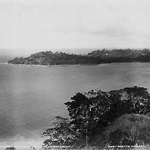
- Title
- General view Bunana Island, from Honggo, Florida (Nggela) Islands (Solomon Islands)
- Type
- Image
- Date
- 1906
- Source
- Anglican Church of Melanesia
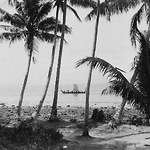
- Title
- Going to Confirmation-Canoe seen from Shore, Florida (Nggela) Islands (Solomon Islands)
- Type
- Image
- Date
- 1906
- Source
- Anglican Church of Melanesia
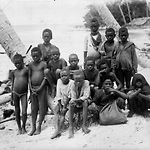
- Title
- Group of Boys at Honggo, Florida (Nggela) Islands (Solomon Islands)
- Type
- Image
- Date
- 1906
- Source
- Anglican Church of Melanesia
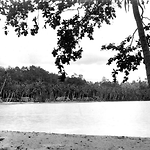
- Title
- Halavo from the west, Florida (Nggela) Islands (Solomon Islands)
- Type
- Image
- Date
- 1906
- Source
- Anglican Church of Melanesia
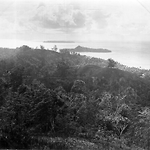
- Title
- Honggo Coast, with Hagima and Mendoliana Islands, Florida (Nggela) Islands (Solomon Islands)
- Type
- Image
- Date
- 1906
- Source
- Anglican Church of Melanesia
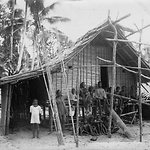
- Title
- House at Kombe, Florida (Nggela) Islands (Solomon Islands)
- Type
- Image
- Date
- 1906
- Source
- Anglican Church of Melanesia
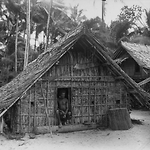
- Title
- House at Kombe, Florida (Nggela) Islands (Solomon Islands)
- Type
- Image
- Date
- 1906
- Source
- Anglican Church of Melanesia
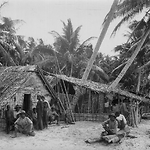
- Title
- Houses at Longapolo, Florida (Nggela) Islands (Solomon Islands)
- Type
- Image
- Date
- 1906
- Source
- Anglican Church of Melanesia
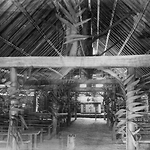
- Title
- Inside Church, Honggo, Florida (Nggela) Islands (Solomon Islands)
- Type
- Image
- Date
- 1906
- Source
- Anglican Church of Melanesia
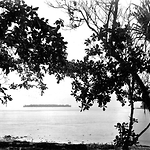
- Title
- Island of Mendoliana, from Honggo, Florida (Nggela) Islands (Solomon Islands)
- Type
- Image
- Date
- 1906
- Source
- Anglican Church of Melanesia
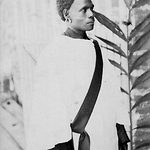
- Title
- John Pegone, Profile, Deacon in Florida (Nggela) Islands
- Type
- Image
- Date
- 1906
- Source
- Anglican Church of Melanesia
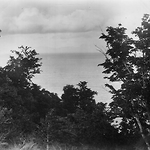
- Title
- Looking towards Guadalcanal from Honggo, Florida (Nggela) Islands (Solomon Islands)
- Type
- Image
- Date
- 1906
- Source
- Anglican Church of Melanesia

- Title
- Looking up the Utuha Passage to Siota, Florida (Nggela) Islands (Solomon Islands)
- Type
- Image
- Date
- 1906
- Source
- Anglican Church of Melanesia
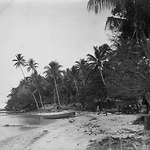
- Title
- On the Beach at Honggo, Florida (Nggela) Islands (Solomon Islands)
- Type
- Image
- Date
- 1906
- Source
- Anglican Church of Melanesia
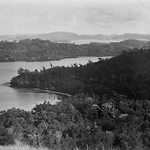
- Title
- Panorama, showing Estuary, Utuha Passage, and Baranago Harbour, Florida (Nggela) Islands (Solomon Islands)
- Type
- Image
- Date
- 1906
- Source
- Anglican Church of Melanesia
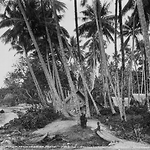
- Title
- Peep through Cocoanut Trees, Honggo, Florida (Nggela) Islands (Solomon Islands)
- Type
- Image
- Date
- 1906
- Source
- Anglican Church of Melanesia
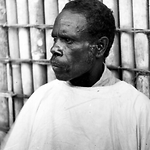
- Title
- Reuben Bula, Vigt., a Florida (Nggela) Islands Deacon
- Type
- Image
- Date
- 1906
- Source
- Anglican Church of Melanesia
.png)
- Title
- Rev. Alfred Lombu, Priest, Florida (Nggela) Islands
- Type
- Image
- Date
- 1906
- Source
- Anglican Church of Melanesia
.png)
- Title
- Tambokoro, and Peter-the Teacher, Florida (Nggela) islands (Solomon Islands)
- Type
- Image
- Date
- 1906
- Source
- Anglican Church of Melanesia
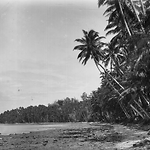
- Title
- The Coast of Honggo, Florida (Nggela) Islands (Solomon Islands)
- Type
- Image
- Date
- 1906
- Source
- Anglican Church of Melanesia
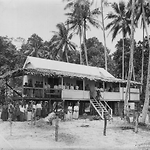
- Title
- The Ladies' Mission House, Honggo, Florida (Nggela) Islands (Solomon Islands)
- Type
- Image
- Date
- 1906
- Source
- Anglican Church of Melanesia
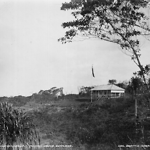
- Title
- The Mission House, Bunana, Florida (Nggela) Islands (Solomon Islands)
- Type
- Image
- Date
- 1906
- Source
- Anglican Church of Melanesia
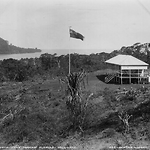
- Title
- The Mission House, Bunana, showing coast around Honggo, Florida (Nggela) Islands (Solomon Islands)
- Type
- Image
- Date
- 1906
- Source
- Anglican Church of Melanesia
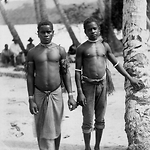
- Title
- Two New Boys for Norfolk Island, at Kombe, Florida (Nggela) Islands (Solomon Islands)
- Type
- Image
- Date
- 1906
- Source
- Anglican Church of Melanesia
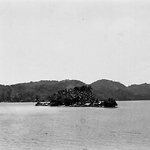
- Title
- Uru Artificial Island, Kwaio District, Malaita Island (Solomon Islands)
- Type
- Image
- Date
- 1906
- Source
- Anglican Church of Melanesia
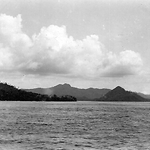
- Title
- View in Sandfly Channel, Florida (Nggela) Islands (Solomon Islands)
- Type
- Image
- Date
- 1906
- Source
- Anglican Church of Melanesia
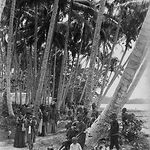
- Title
- Women Carrying Food and Water, Honggo, Florida (Nggela) Islands (Solomon Islands)
- Type
- Image
- Date
- 1906
- Source
- Anglican Church of Melanesia
